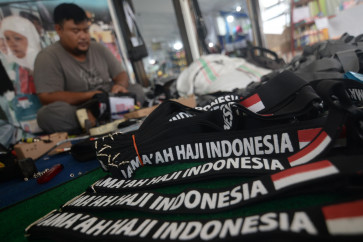The rapid rise of Chinese privately-owned entrepreneurs
Once upon a time, there was a girl who came from a very poor family in the countryside in China
Change text size
Gift Premium Articles
to Anyone

O
nce upon a time, there was a girl who came from a very poor family in the countryside in China. When she was 16, her father could no longer afford for her to attend school and gave her RMB 600 (the equivalent of around US $80) hoping she could set herself up to earn a living with it.
The girl rented a three square meter space tucked behind a barber's shop, and started selling shoes. Because space was so limited, she biked to get a few pairs of shoes each week and once sold would return for more.
After a few years, our girl had saved enough money to rent the whole barber's shop. In five years, she had made a million RMB in a region where the average annual income was about RMB 2,000 at that time.
Retail, wholesale, manufacturing - an upwardly mobile progression Spurred on by her retail success, the Chinese girl decided to venture into the wholesale business and distinguished herself from the competition by selling a wider variety of more fashionable shoes sourced from different provinces.
Business boomed and three years later she decided to manufacture her own shoes. Our girl built a large plant in the area, but the road to riches never did run smoothly and she ran into all sorts of problems with product quality and cash flow. Not only that, competition was fierce and her sales dropped.
Seeking other opportunities, the Chinese girl acted on a rumor that people in Russia needed shoes, so off she went to look. Trading was tricky without a word of Russian so she went to a Chinese restaurant to find a student who could speak both Russian and Chinese.
She was looking for customers store by store. In the end, she came home with some modest orders. But that was the starting point of expanding the market to Russia and Eastern Europe.
When interviewed in 2007 for a book on Chinese entrepreneurs, our girl was in negotiation with an American retailer regarding plans to expand there and expressed a desire to invest in R&D and build her own brand of shoes.
POEs - China's future? This girl's story is surprisingly typical of the rise of Chinese entrepreneurs. While much is known about large Chinese state-owned enterprises, little is known about these privately-owned, entrepreneur-driven counterparts - or POEs, although their contribution to GDP in 2005 was 50 percent, up from about 40 percent in 2000.
The truth of the matter is that POEs are not only the rivals of multinational corporations competing in some of the mid-tier segments in China, but they are also going to be competing with multinationals in other emerging markets and on a global scale.
Recent research demonstrated that 70 percent of revenue in Zhejiang Province comes from POEs driven by these dynamic entrepreneurs. While the region undoubtedly has an entrepreneurial background historically, the emerging of POEs is a testament to a massive untapped market with a huge appetite for everything.
Almost any company, no matter how low its quality or level of technology, can find a market for its products in China - as long as the price is right.
Those Chinese entrepreneurs may be endowed with a greater sense of opportunism and cast iron determination, but it is the most natural thing in the world for anyone to look at how people are competing in the whole industry value chain, and they ask why they can't do it too.
Room for collaboration There is no simple way of gauging how all of this will evolve in the near future, but, like our Chinese girl and her American retailer, there are undoubtedly certain areas where Chinese POEs and their more established multinational counterparts would benefit from clear cooperation. While there are certain industries, such as oil or energy, where the Chinese Government is unlikely to let go the reins, private enterprise has been able to break into other previously untouchable areas, such as the automobile sector.
China has many labor-intensive industries with a little bit of technology and reasonable quality competing purely for cheap labor. Continuing to compete in the low-cost zone is going to be tough in the current credit crunch situation, providing an incentive for low-end, labor-intensive Chinese industries to move up the value chain.
The biggest challenge for Chinese POEs will be to make the technology and brand management improvements in order to move up the value chain. This opens the door for potential cooperation with their multinational counterparts who have the technology know-how and brand experience. MNCs could benefit from Chinese know-how in the fine art of cheap production and local customer insights.
Successful outcomes of such partnerships, however, like anything, will depend on clarity of objective on both sides - and good cross-cultural communication.









